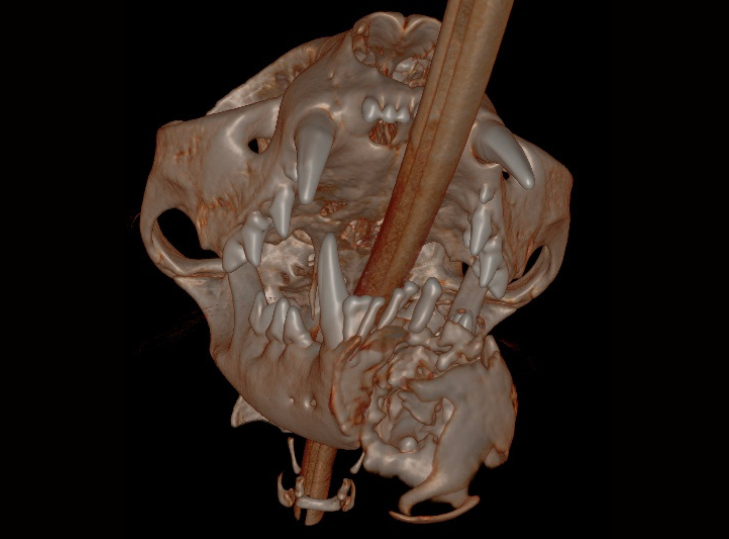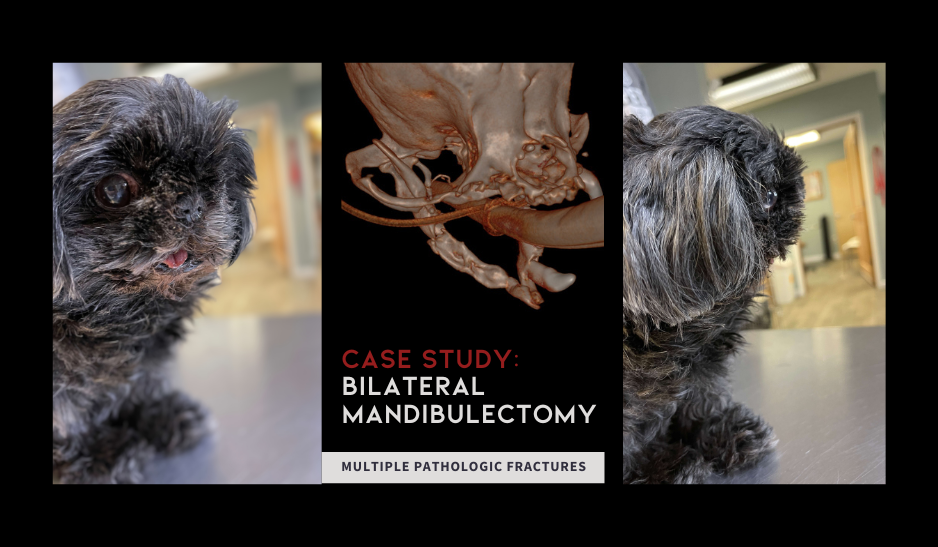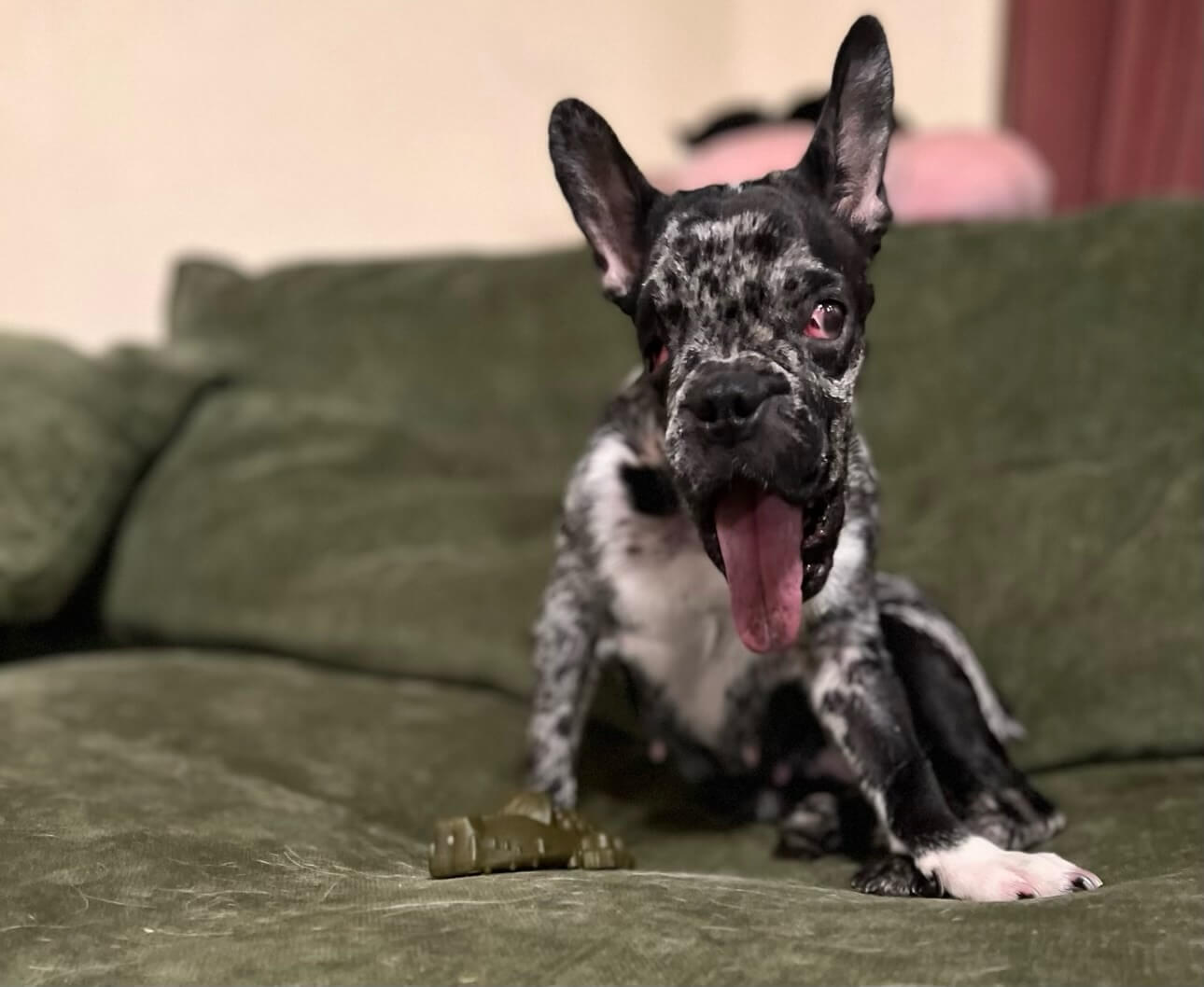Bilateral Mandibulectomy - Fractures
Case Summary: As noted in other posts, removing or shortening the mandibles can be a needed procedure. Most patients are more comfortable and can...
2 min read
 Jennifer Mathis, DVM, DAVDC, CVPP
:
Oct 3, 2023 2:02:08 PM
Jennifer Mathis, DVM, DAVDC, CVPP
:
Oct 3, 2023 2:02:08 PM

Removing or shortening the mandibles can be helpful. Most patients are more comfortable and can have a relatively cosmetic outcome. Sometimes the mandibles are removed due to fractures that cannot be repaired. This case was removed due to an oral tumor.
Bilateral rostral mandibulectomy to excise an oral mass that is suspected to be benign (not spreading) but locally invasive. Oral surgical removal of unerupted/impacted lower left canine tooth occupying the majority of the left mandible.
Cystic rostral mandibular swelling associated with unerupted 304. Adopted in Sept as intact male, estimate age 2. RDVM neutered and found mild swelling and unerupted 304 (lower left canine tooth). Swelling increased since adoption.

The patient is a 2-year-old Male Neutered Siamese/Tabby/Birman (Mixed). He was recently adopted and a missing lower canine tooth was noted. A chin mass had appeared and was growing much larger over the last 2-3 months so Dr. Bethany Huhman from Taylor Veterinary Hospital referred him to Animal Dentistry Referral Services.
The canine tooth was not missing, but was impacted present in the middle of the left mandible. A tumor was present requiring removal of the tumor and associated impacted tooth.
We scaled, polished, performed 3D imaging and intraoral radiographs (x-rays), and confirmed the presence of an oral mass. The mass effect appears to have enlarged and extended to the lower right canine tooth.
As previously noted, the lower left canine tooth was unerupted and impacted into the center of the mandible. The cyst growth/mass effect has caused haphazard tissues to be present around all of the incisors.
(Hover over any image to read caption)
Bilateral rostral mandibulectomy was performed to excise the mass with submission to the oral pathologist (SOPA, www.sopforanimals.com). The mass was confirmed to be a FIOT (feline inductive odontogenic tumor) which does not spread to other organs but expands and is locally invasive requiring oral surgical excision. Margin mass excision was performed by removing the growth enblock extending to the middle of the left mandible and including the right canine (prevents impact with palate in the case of secondary mandibular drift).
Chin and lip tissues were preserved where possible as well as the sublingual salivary caruncles. The tongue side of the left mandible was partially preserved to allow for the remaining mandible segments to meet which will improve the long term occlusion/chewing capability. It is likely the patient will just be a normal cat with a short lower jaw length. The remaining lower cheek teeth were blunted to prevent trauma should one or both mandibles drift inward.
Histopathology confirms the diagnosis of feline inductive odontogenic tumor, which is histologically indistinguishable from an ameloblastic fibroma. FIOT/ameloblastic fibroma is a benign tumor of odontogenic epithelium that includes induced odontogenic mesenchyme. Because this lesion occurs almost exclusively in young animals, there is some possibility that is a hamartoma (i.e. proliferative developmental tumor) rather than a true neoplasm.
Complete excision is expected to be curative. In this case, the margin on the left is histologically “dirty” although this may not truly represent the biological margin. Overall, margins are promising since the neoplasm does not infiltrate soft tissues and the mass extends just to the margin where additional debridement of left mandibular bone may have removed small amounts of remaining neoplastic tissue. Close monitoring is advised.
No regrowth has happened to date, but annual anesthetic dental procedures with intraoral radiographs are needed for all pets.
"Thank you for reaching out. Mars is doing great! He has shown me a totally different personality and is thriving. Couldn't be happier. :)"

Case Summary: As noted in other posts, removing or shortening the mandibles can be a needed procedure. Most patients are more comfortable and can...

Case Summary: Removing or shortening the mandibles can be helpful. Most patients are more comfortable and can have a relatively cosmetic outcome. As...
Case Summary: Guided Tissue Regeneration (GTR) is a technique performed to promote osseous regeneration, allowing for tissue growth (bone and soft...